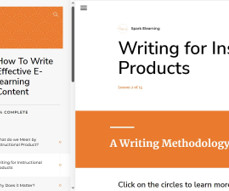Top 8 Effective Instructional Design Models to Look Out for in 2024!
Hurix Digital
APRIL 3, 2024
Evolution of Instructional Design Over the years, instructional design has evolved from traditional teaching methods to incorporate technology-driven approaches that cater to the digital age, including modern learning models. Significance in Curriculum Development Instructional design plays a crucial role in curriculum development.






























Let's personalize your content